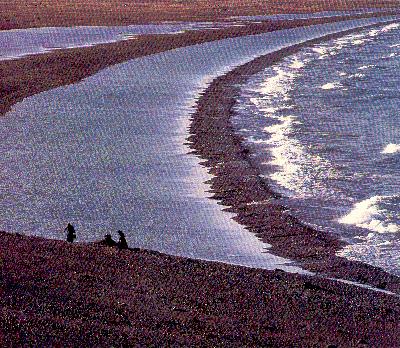| Travel in China > Natural Scenery > Lakes |
|
|
Namtso Lake
To the southeast of the Namtso Lake is the main peak of snow-covered Danggula Mountains, and continuous highlands and hills stand on the north side of the lake. Surrounded by vast grassland, the lake looks like a huge mirror. With the clear blue sky over the dark blue lake, white snow, green grass, colorful wild flowers and herdsman's ox-hair tents make a beautiful and appealing natural landscape. The Namtso Lake is abundant in precious medicinal materials such as Chinese caterpillar fungus, fritillaria, and snow-lotus and as well as various fish species such as highland thin-scale fish and no-scale fish. The lake is also a habitat of various wild animals such as black bear, wild ox, wild donkey, blue sheep and marmot, etc.
Mani stone mounds can be found everywhere along the Namtso Lake. Every Tibetan Buddhist throws a stone on every mound he or she comes across. To throw a stone represents to recite the scriptures once. Hanging on the Mani stone mound are pieces of cloth in five different colors, blue, white, red, green and yellow. The cloth waves in the wind and one wave means sending the scriptures to the Heaven once. With the elapse of time, separate stone mounds have joined together to form a grand sight of Mani wall, which is over one hundred meters long and about one meter high. Regarded as a holy lake by pious Buddhists, the lake attracts pilgrims from as far as India and Nepal. |
||||
All rights reserved. Reproduction of text for non-commercial purposes is permitted provided that both the source and author are acknowledged and a notifying email is sent to us. |
||||
 |
